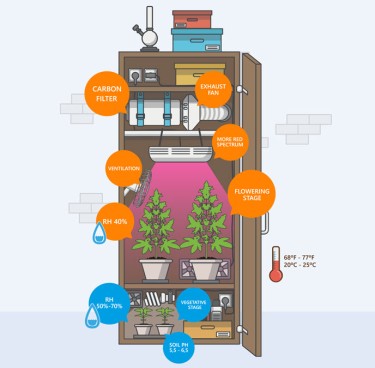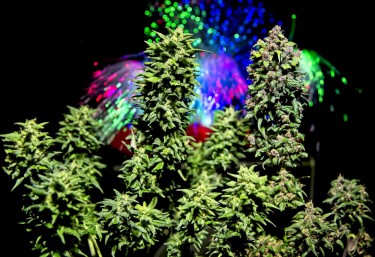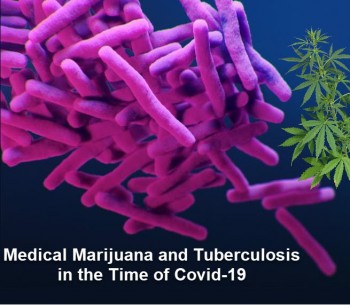Autoflowers are a highly robust species of cannabis that are renowned for their ability to flower without the reliance on light cycles. To grow autoflowers successfully, it's important to understand the key factors that contribute to their growth and health. Whether it's carefully implementing low-stress training techniques or selecting the right soil, there are many steps you can take to enhance your autoflower cultivation experience. From choosing the best strains for your environment to optimizing your light cycles, the secrets to successful autoflower growth are waiting to be uncovered.
What type of autoflower should I grow?
Autoflowering seeds come in a variety of strains, each offering its own unique appearance, effects, and yields. The three main types of cannabis strains are indica, sativa, and ruderalis. Indica strains are known for their relaxing, sedative effects and are often used for medicinal purposes. Sativa strains, on the other hand, are known for their uplifting and energetic effects and are commonly used for recreational purposes. Ruderalis strains, the wild ancestor of indica and sativa, are known for their hardy growth habits and fast flowering times (all autoflowering strains contain ruderalis genetics).
It's important to understand the differences between these strains to make informed decisions about which type of autoflowering cannabis to grow. Indica strains tend to grow short and bushy, making them ideal for smaller growing spaces. Sativa strains, on the other hand, grow tall and thin, making them ideal for larger growing operations. Ruderalis strains are highly adaptable and can thrive in a range of conditions.
No matter which strains you choose, autoflowering cannabis is a versatile and convenient choice for gardeners of all levels. With their easy-to-grow nature and quick flowering times, autoflowering cannabis is the perfect addition to any gardener's collection.
What are the best light cycles to grow autos?
To achieve optimal growth and yields with autoflowering strains it's crucial to understand the importance of light cycles. A balanced regimen of light and darkness is essential, as it triggers the plant's flowering and maturing processes. Generally, an 18-hour light cycle and a 6 hour dark cycle is recommended, with a gradual reduction of light towards the end of the flowering stage to promote bud development. However, autoflowers are unique in that they can thrive under either 18/6, 20/4 or even 24 hours of light. Experimenting with different light schedules may also be beneficial, depending on your particular strain and growing conditions. By providing your autoflowers with the right light cycles, you'll be rewarded with a bountiful harvest of premium quality buds.
What type of soil should I use to grow autoflowers?
Cannabis is a complicated plant, if you want to achieve huge yields then just using whatever soil you have in your garden may not be the best idea. The key to a good soil is to make sure it has good drainage, is light and airy and full of natural nutrients. Soils containing compost, bat guano and worm castings are all excellent natural additives that provide a balanced and regular supply of organic nutrients to your cannabis plant. Soils that contain lots of clay will usually be too heavy and dense which can prevent the roots of a cannabis plant from expanding. If your soil is too dense you can amend it using things such as perlite and vermiculate to create pockets of air and improve drainage. It is also very important that you check the pH level of your soil, it should be between 6.0 and 7.0 although the perfect range is 5.8-6.2 so the closer you can get to this the better off your plants will be.
What kind of plant pots should I use for my autoflower grow?
Choosing the right containers for your plants is a critical decision. The type of pot you choose can impact root development, water retention, and overall plant health. A breathable material, such as fabric or plastic, is ideal for pots, as it allows for air to circulate and prevents water from becoming trapped. Additionally, choosing pots that are the appropriate size for your plants will ensure they have enough room for root growth and prevent any overcrowding. Consider using pots with drainage holes to prevent waterlogging and ensure that your plants receive adequate hydration. By carefully selecting the right pots, you'll provide your autoflowers with the ideal environment to thrive and flourish.
What is the best way to germinate autoflowers?
To get the best possible germination rates it is best to pre germinate cannabis seeds before planting them in soil. There are various methods used to germinate seeds, possibly the most basic and successful way to do so is using paper towels. Here is a step-by-step approach of how to germinate cannabis seeds using the paper towel approach.
Soak the seeds in water: Place your autoflowering seeds in a bowl of warm water and let them soak for about 30 minutes.
Prepare the paper towels: Take two paper towels and moisten them with distilled water. Squeeze out any excess water so the towels are damp but not soaking wet.
Place the seeds on the paper towels: Arrange your soaked seeds on one of the damp paper towels and fold the other towel over them, sandwiching the seeds in between.
Store the paper towels: Place the paper towels with the seeds inside a plastic bag or a container with a lid. Make sure the container is kept in a warm and dark place.
Monitor the seeds: Check on the seeds every 12-24 hours and make sure the paper towels remain moist. If they start to dry out, mist them with water.
Germination: In about 24-48 hours, the seeds should start to germinate and you'll see the roots starting to emerge. At this point, you can plant them in soil or rockwool cubes.
Grow: Once the seeds have germinated, keep them in a warm and bright place and make sure they receive enough water and nutrients. Your autoflowering plants will start to grow and flower on their own in a few weeks.
How long does it take for autoflowers to grow?
Growing weed can be divided into 3 main growth stages, seedling, vegetative and flowering. With each type of cannabis strain taking different amounts of time in each stage, how long it takes to grow weed varies from strain to strain. Autoflowering strains are known for their fast turnaround time from seed to harvest. Most autos will be ready to harvest in as little as 8-10 with some sativa dominant strains taking up to 12 weeks to finish. This speed makes them a popular choice for indoor growers with limited space, as well as outdoor growers who want to get multiple harvests in one season. The exact length of the growing cycle will depend on several factors, including the strain, the growing conditions, and the overall health of the plants. With proper care and attention, cultivators can often achieve healthy and abundant harvests in a relatively short period of time.
How to grow autoflowers during the seedling stage (weeks 0 – 1)
Growing autoflowering cannabis during the seedling stage requires careful attention to light, water, and temperature. Keep the seedlings in a warm and bright place, but away from direct sunlight. Ensure they receive adequate hydration, but don't overwater, as this can lead to root rot. Provide a balanced source of nutrients to promote healthy growth, and be patient as your seedlings mature and establish strong root systems. With a little care and attention, you'll be rewarded with thriving and robust autoflowering plants.
How to grow autoflowers during the vegetative stage (weeks 1 – 4)
The vegetative stage is an important time for the growth and development of your autoflowering cannabis plants. It is during the veg stage that a plant does most of its growing and builds its physical structure that will later be used to hold its buds. To ensure a successful harvest, it's crucial to provide them with plenty of light and nutrients. Try using low-stress training techniques to encourage bushier growth and keep an eye on the plants' height to prevent excessive stretching. Adequate water and air flow are also essential, so make sure the plants receive enough of both. With proper care and attention, your autoflowering plants will thrive during the vegetative stage and be well on their way to producing a bountiful harvest. As always, be patient and watch your plants grow and flourish with each passing day.
How to grow autoflowers during the flowering stage (weeks 4 – 10)
The flowering stage is the period when your autoflowers begin to bloom and produce those all-important buds. If you want to produce a high yielding autoflowering cannabis plant then it is important to provide them with the right light and nutrient levels during this stage. It is during the flowering period that a plant will start to produce bud, so it's vital that you grow room has good air circulation and humidity levels to prevent mold and mildew from wreaking havoc on your grow. During the flowering stage you need to regularly check up on your plants and keep an eye out for any signs of mold, stress or pests. Any issues as this stage of the grow need to dealt with swiftly so that the plant can continue to focus as much of its energy to growing bud.
How and when to flush autoflowers
Flushing your cannabis grow is the process of removing any excess nutrients left stored within the plant before it is harvested. Not all growers flush their weed, for those of you using organic nutrients to grow then it isn't necessary, but we feel it’s important for any growers using synthetic nutrients as it not only improves the taste but also removes any potentially harmful nutrients that have built up in the plant. It's recommended to flush your cannabis plants with pH adjusted water 3-5 days before harvest to allow enough time for the excess nutrients to leach out of the soil. Flushing is an important step in the cultivation process and can help to improve the overall quality and taste of your weed.
How and when to feed autoflowers
Autoflowering plants should receive a balanced source of nutrients throughout their growth cycle, starting from the seedling stage. Gradually increase the nutrient levels as the plants mature, and adjust according to the plants' needs. Always follow the manufacturer's guidelines, and avoid over-fertilization, which can lead to nutrient burn and harm the plants. Feed your autoflowering plants at regular intervals and monitor their growth closely to ensure they receive the proper nutrients for optimal health and growth.
How to increase autoflower yields
There are various methods that growers use to train autoflowers to increase yield, these methods are put into two categories, low stress training (LST) and high stress training (HST). LST training is best suited to autoflowers because it causes minimal stress to the plant and therefore disrupts its growth cycle much less than HST would. Low-Stress Training involves carefully bending and tying down the plants to encourage them to grow bushier and more evenly. Three common techniques include ScrOG (Screen of Green), SOG (Sea of Green), and the 'Tie and Bend' method. ScrOG involves using a screen to guide the plants, while SOG focuses on planting many small plants closely together. The 'Tie and Bend' method is a simple technique that involves tying down the branches and bending them downwards to promote a fuller, bushier growth. With a little care and attention, LST training can help you achieve a larger and more abundant harvest from your autoflowering plants.
Are autoflowers good for beginners?
Autoflowering strains are a great choice for novice growers because how easy they are to grow and how robust they are. Compared to photoperiods they require minimal attention, and their ability to flower automatically eliminates the need for adjusting light cycles. Autoflowers are also smaller in size and faster to flower which makes ideal for anyone growing indoors with limited space. However, it's still essential to understand the basic requirements for growing cannabis, such as providing the proper light, nutrients, and growing conditions to ensure a successful harvest.
What is the average yield from an autoflower?
The average yield from an autoflowering cannabis plant varies depending on several factors, including the strain, growing conditions, and overall health of the plant. On average, indoor growers can expect a yield of around 4-6 ounces per plant, while outdoor growers may see yields of up to 12 ounces or more. With proper care and attention, experienced cultivators can often achieve higher yields from their autoflowers, especially with techniques such as LST training and providing the proper nutrients. Regardless of the yield, autoflowers are a popular choice for growers due to their ease of growing and relatively quick turnaround time from seed to harvest.
How often should you water autoflowers?
There isn’t a hard and fast rule on the frequency to which you should water cannabis plants. As you grow and become more experienced you will learn to gage when a plant needs more water from the look of the plant or feel of the soil. Its difficult to give an exact answer to how often a plant needs watering as it depends on a number of factors, including the size of the plant, the temperature and humidity in your grow area, and the soil moisture level. As a general rule, it's recommended to water autoflowers when the top inch of soil is dry to the touch. Over-watering can be as damaging as under-watering, so it's important to ensure proper drainage and avoid leaving the roots in standing water. It's also a good idea to monitor the leaves for signs of stress or wilting, which can indicate the need for more frequent watering.







